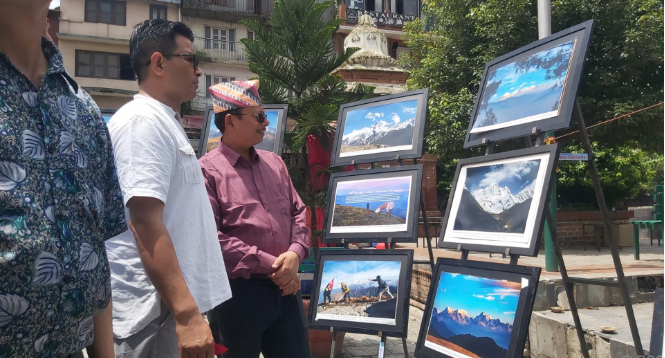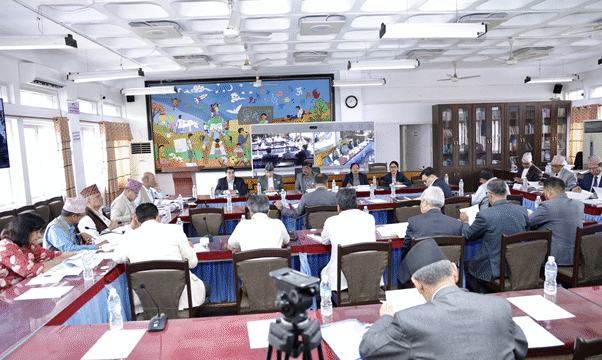On the occasion of the 185th World Photography Day, the National Forum of Photojournalists (NFPJ) Nepal organized a photo exhibition at Patan Durbar Square today. The exhibition, held under the theme “When the Himalayas Smile,” features over 50 photographs of Nepal’s majestic mountain ranges, captured by various photojournalists over the years.
During the inauguration of the exhibition, the Chief District Officer of Lalitpur, Tulsi Bahadur Shrestha, emphasized the importance of such events in fostering the talents of photographers. “This exhibition has contributed in many ways. The photographs on display highlight the natural significance of our Himalayas, depict their current state, and inform us about the impacts of climate change. It’s often said that a picture is worth a thousand words, and this exhibition holds significance from multiple perspectives,” Shrestha remarked.
He further noted that the exhibition not only showcases the breathtaking beauty of the Himalayas, which attracts tourists but also promotes tourism. The images also convey a powerful message about the need to mitigate the negative effects of climate change on the mountains.
World Photography Day is celebrated globally on August 19 each year. In Nepal, the day has been observed annually since 1997, following the establishment of the National Forum of Photojournalists. The day serves to educate about the history of photography, honor veteran photographers, and encourage the younger generation.
NFPJ President Pradeep Raj Banta explained that the exhibition was organized with a focus on the effects of climate change on the Himalayas and the importance of the “Save the Himalayas” campaign. “The exhibition aims to attract both domestic and international tourists to Nepal’s mountainous regions and highlight the cultural and social significance of these areas. It also plays a crucial role in promoting Nepal to the world, enhancing tourism, and boosting the capabilities of photojournalists,” Banta said. He expressed hope that the exhibition would inspire professional photographers and encourage them.
The history of photography dates back to the invention of the “Camera Obscura,” considered the mother of photography. Over nearly two centuries, photography has evolved from black-and-white images and photo transmitters to a medium accessible to everyone. Significant research and experiments in this field began in France, where scientists attempted to capture images permanently after observing light entering a dark room through a small hole.
In 1826, Joseph Nicéphore Niépce took the first photographic image, a view from his window, which took nearly eight hours to capture. This photograph is recognized as the world’s first photographic image, though it was blurry and only showed some shapes and patterns. Later, in 1838, Louis Daguerre succeeded in creating clearer photographs. However, it wasn’t until 1839 that the first practical photograph was taken, capturing a street scene.
Photography in Nepal began during the reign of Bir Shamsher, when Dambar Shamsher, a key figure in Nepal’s photographic history, started bringing photography equipment from the UK and Germany. Since then, Nepali photography has made significant strides, with many Nepali photographers playing a crucial role in its advancement.






